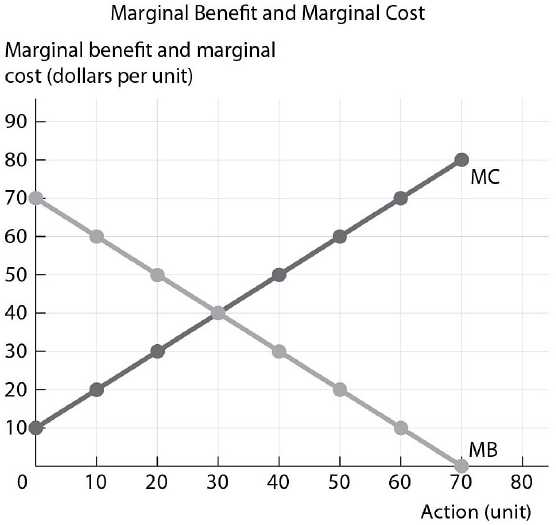The term heritability refers to:
A) the average phenotypic change between succeeding generations
B) those phenotypic traits that are immune to environmental influences
C) the degree of similarity between parent and child
D) the proportion of a population's total phenotypic variation that is attributable to the effects of the environment
E) the proportion of a phenotypic trait's variance that is attributable to genetic variance between individuals
E
You might also like to view...
Symbolic anthropologists argue that culture can be reduced to genetically inherited linguistic traits that determine the way people classify and view the natural environment
Indicate whether the statement is true or false.
Refer to the figure below. At the 10th unit of action, which of the following is true?

A) Marginal cost exceeds marginal benefit.
B) Marginal benefit exceeds marginal cost.
C) Total losses are minimized.
D) Total gains are maximized.
Anatomically modern humans were found in all of the following sites EXCEPT:
a. Shanidar, Iraq. b. Cro-Magnon, France. c. Qafzeh, Israel. d. Omo, Ethiopia.
Several species of very early hominins evolved over four million years; this is a clear example of:
a. microevolution. b. macroevolution. c. ancient synthesis. d. punctuated equilibrium. e. sexual dimorphism.